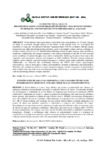Por favor, use este identificador para citar o enlazar este ítem:
http://www.alice.cnptia.embrapa.br/alice/handle/doc/1030764Registro completo de metadatos
| Campo DC | Valor | Lengua/Idioma |
|---|---|---|
| dc.contributor.author | CARVALHO, J. de F. C. | pt_BR |
| dc.contributor.author | CRUSIOL, L. G. T. | pt_BR |
| dc.contributor.author | PERINI, L. J. | pt_BR |
| dc.contributor.author | SIBALDELLI, R. N. R. | pt_BR |
| dc.contributor.author | FERREIRA. L. C. | pt_BR |
| dc.contributor.author | MARCELINO-GUIMARÃES, F. C. | pt_BR |
| dc.contributor.author | NEPOMUCENO, A. L. | pt_BR |
| dc.contributor.author | NEUMAIER, N. | pt_BR |
| dc.contributor.author | FARIAS, J. R. B. | pt_BR |
| dc.date.accessioned | 2015-12-07T11:11:11Z | pt_BR |
| dc.date.available | 2015-12-07T11:11:11Z | pt_BR |
| dc.date.created | 2015-12-07 | pt_BR |
| dc.date.issued | 2015 | pt_BR |
| dc.identifier.citation | Global Science and Technology, v. 8, n. 2, p. 1-16, maio/ago. 2015. | pt_BR |
| dc.identifier.issn | 1984-3801 | pt_BR |
| dc.identifier.uri | http://www.alice.cnptia.embrapa.br/alice/handle/doc/1030764 | pt_BR |
| dc.description | ABSTRACT: Water deficit is the major abiotic factor that limits crop productivity. Climate changes are likely to exacerbate drought stresses in the future. In the present work, we investigated the feasibility of using the Normalized Difference Vegetation Index (NDVI) combined with the canopy tempera ture and other physiological characteristics, such as chlorophyll content and gas exchange, to monitor soybean (Glycine max L. Merrill) plants differing in their drought response under glasshouse conditions. Additionally, the drought responses of the cultivars Embrapa 48 and BR 16 were assessed under conditions of natural drought, water deficit simulated by sheltering the plants from rain at the vegetative and reproductive periods and irrigation at field conditions. Remote sensing techniques could be used to initially assess the drought responses of soybean plants under controlled conditions. Additionally, we observed the relationship between the NDVI and several physiological characteristics, such as chlorophyll content, photosynthesis, stomatal conductance and transpiration. Therefore, the combination between remote sensing techniques and the assessment of physiological traits of plant materials at the same developmental stage and leaf areas is useful to accurately monitor cultivars presenting different drought responses. RESUMO: O déficit hídrico é o maior fator abiótico que limita a produtividade das culturas. As mudanças climáticas provavelmente agravarão os estresses hídricos no futuro. No presente trabalho, nós investigamos a viabilidade de uso do Índice de Vegetação por Diferença Normalizada (NDVI) combinado à temperatura do dossel e a outras características fisiológicas, tais como teor de clorofila e trocas gasosas, para monitorar plantas de soja (Glycine max L. Merrill) com respostas diferenciais à seca, sob condições de casa de vegetação. Adicionalmente, as respostas à seca das cultivares Embrapa 48 e BR 16 foram avaliadas sob condições de seca natural, déficit hídrico simulado abrigando - se as plantas da chuva nos períodos vegetativo e reprodutivo e irrigação sob condições de campo. Tecnologias de sensoriamento remoto puderam ser usadas para inicialmente avaliar as respostas à seca de plantas de soja sob condições controladas. Além disso, nós observamos a relação entre o NDVI e diversas características fisiológicas, tais como teor de clorofila, fotossíntese, condutância estomática e transpiração. Portanto, a combinação entre técnicas de sensoriamento remoto e a avaliação de características fisiológicas e materiais vegetais no mesmo estádio de desenvolvimento e áreas foliares é útil para monitorar precisamente cultivares apresentando diferentes respostas à seca. | pt_BR |
| dc.language.iso | eng | eng |
| dc.rights | openAccess | eng |
| dc.title | Phenotyping soybeans for drought responses using remote sensing techniques and non-destructive physiological analysis. | pt_BR |
| dc.type | Artigo de periódico | pt_BR |
| dc.date.updated | 2017-08-02T11:11:11Z | pt_BR |
| dc.subject.thesagro | Soja | pt_BR |
| dc.subject.thesagro | Deficiência hídrica | pt_BR |
| dc.subject.nalthesaurus | Soybeans | pt_BR |
| dc.subject.nalthesaurus | Plant-water relations | pt_BR |
| riaa.ainfo.id | 1030764 | pt_BR |
| riaa.ainfo.lastupdate | 2017-08-02 | pt_BR |
| dc.identifier.doi | 10.14688/1984-3801/gst.v8n2p1-16 | pt_BR |
| dc.contributor.institution | JOSIRLEY DE FÁTIMA CORRÊA CARVALHO | pt_BR |
| dc.contributor.institution | LUIS GUILHERME TEIXEIRA CRUSIOL, EMBRAPA SOJA | eng |
| dc.contributor.institution | LUIZ JUNIOR PERINI, EMBRAPA SOJA | eng |
| dc.contributor.institution | RUBSON NATAL RIBEIRO SIBALDELLI, UNIVERSIDADE ESTADUAL DO NORTE DO PARANÁ | eng |
| dc.contributor.institution | LEONARDO CESAR FERREIRA, EMBRAPA SOJA | eng |
| dc.contributor.institution | FRANCISMAR CORREA MARCELINO GUIMARA, CNPSO | eng |
| dc.contributor.institution | ALEXANDRE LIMA NEPOMUCENO, SRI | eng |
| dc.contributor.institution | NORMAN NEUMAIER, CNPSO | eng |
| dc.contributor.institution | JOSE RENATO BOUCAS FARIAS, CNPSO. | eng |
| Aparece en las colecciones: | Artigo em periódico indexado (CNPSO)  | |
Ficheros en este ítem:
| Fichero | Descripción | Tamaño | Formato | |
|---|---|---|---|---|
| v08n02a01.pdf | 792,98 kB | Adobe PDF |  Visualizar/Abrir |









